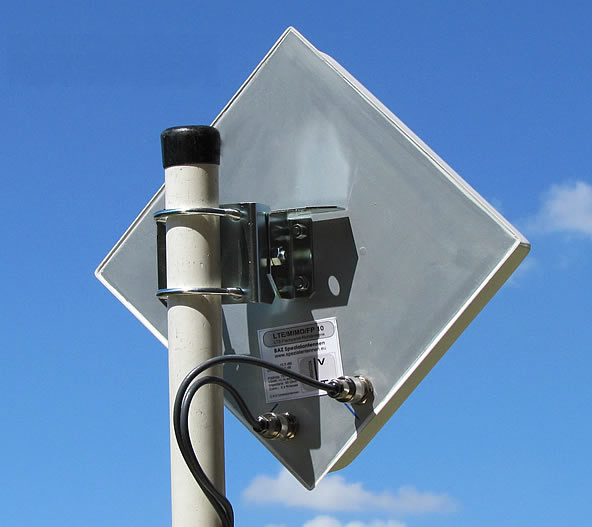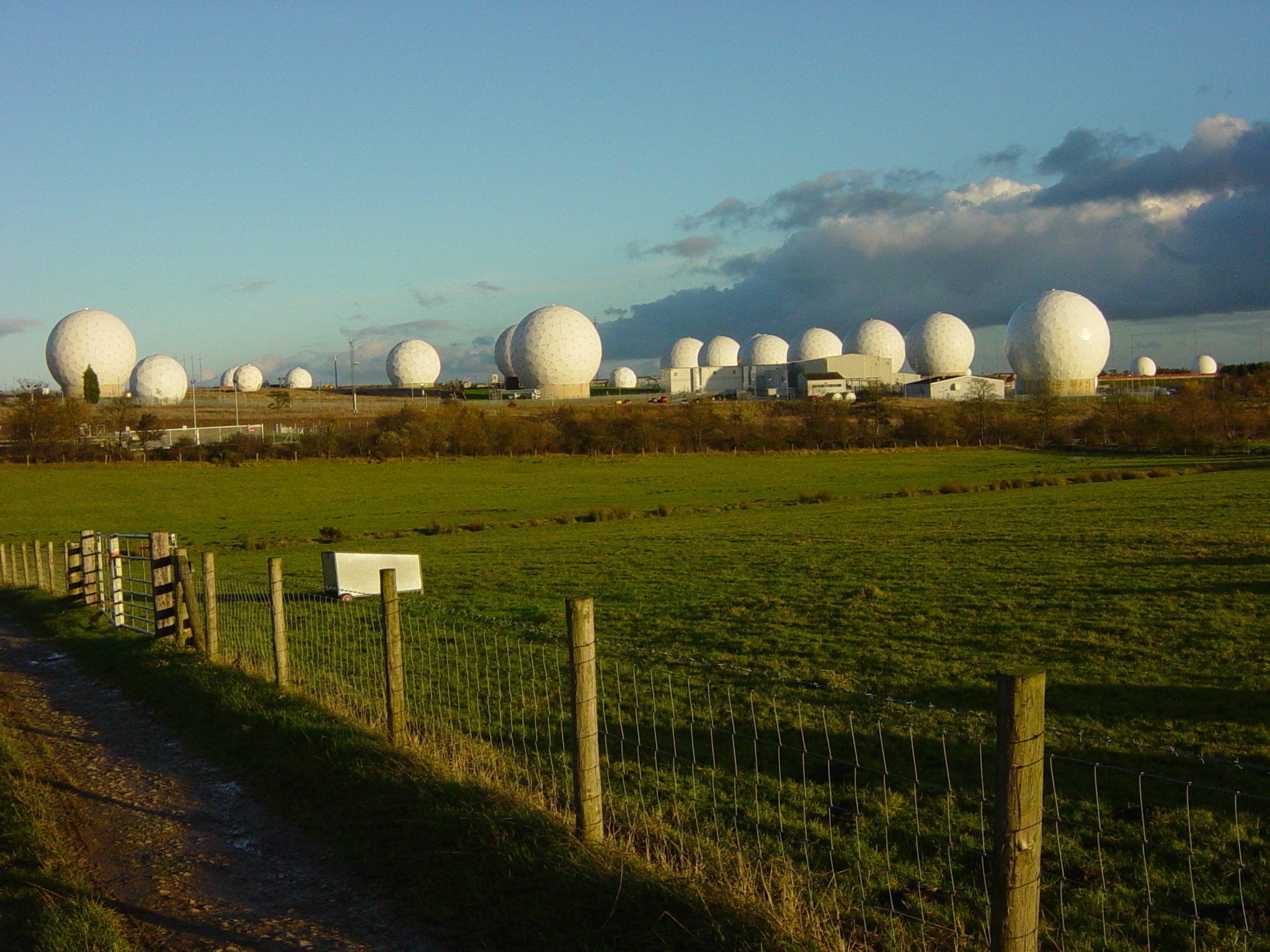|
3G MIMO
3G MIMO describes MIMO techniques which have been considered as 3G standard techniques. MIMO, as the state of the art of intelligent antenna (IA), improves the performance of radio systems by embedding electronics intelligence into the spatial processing unit. Spatial processing includes spatial precoding at the transmitter and spatial postcoding at the receiver, which are dual each other from information signal processing theoretic point of view. Intelligent antenna is technology which represents smart antenna, multiple antenna (MIMO), self-tracking directional antenna, cooperative virtual antenna and so on. Technology Spatial precoding of intelligent antenna includes spatial beamforming and spatial coding. In wireless communications, spatial precoding has been developing for high reliability, high rate and lower interference as shown in the following table. Summary of 3G MIMO The table summarizes the history of 3G MIMO techniques candidated for 3G standards. Although th ... [...More Info...] [...Related Items...] OR: [Wikipedia] [Google] [Baidu] |
MIMO
In radio, multiple-input and multiple-output, or MIMO (), is a method for multiplying the capacity of a radio link using multiple transmission and receiving antennas to exploit multipath propagation. MIMO has become an essential element of wireless communication standards including IEEE 802.11n (Wi-Fi 4), IEEE 802.11ac (Wi-Fi 5), HSPA+ (3G), WiMAX, and Long Term Evolution (LTE). More recently, MIMO has been applied to power-line communication for three-wire installations as part of the ITU G.hn standard and of the HomePlug AV2 specification. At one time, in wireless the term "MIMO" referred to the use of multiple antennas at the transmitter and the receiver. In modern usage, "MIMO" specifically refers to a class of techniques for sending and receiving more than one data signal simultaneously over the same radio channel by exploiting multipath propagation. Additionally, modern MIMO usage often refers to multiple data signals sent to different receivers (with one or more ... [...More Info...] [...Related Items...] OR: [Wikipedia] [Google] [Baidu] |
Spatial Multiplexing
Spatial multiplexing or space-division multiplexing (often abbreviated SM, SDM or SMX) is a multiplexing technique in MIMO wireless communication, fibre-optic communication and other communications technologies used to transmit independent channels separated in space. ( Other multiplexing techniques include FDM (frequency-division multiplexing), TDM (time-division multiplexing) or PDM ( polarization-division multiplexing). ) Fibre-optic communication In fibre-optic communication SDM refers to the usage of the transverse dimension of the fibre to separate the channels. Techniques Multi-core fibre (MCF) Multi-core fibres are fibres designed with more than a single core. Amongst different types of MCFs exist, “Uncoupled MCF” is the most common in which each core is treated to be an independent optical path resulting in increasing in channel capacity. However, the main limitation to these systems is the presence of inter core crosstalk and ways to deal it as well as t ... [...More Info...] [...Related Items...] OR: [Wikipedia] [Google] [Baidu] |
IEEE 802
IEEE 802 is a family of Institute of Electrical and Electronics Engineers (IEEE) standards for local area networks (LAN), personal area network (PAN), and metropolitan area networks (MAN). The IEEE 802 LAN/MAN Standards Committee (LMSC) maintains these standards. The IEEE 802 family of standards has had twenty-four members, numbered 802.1 through 802.24, with a working group of the LMSC devoted to each. However, not all of these working groups are currently active. The IEEE 802 standards are restricted to computer networks carrying variable-size packets, unlike cell relay networks, for example, in which data is transmitted in short, uniformly sized units called cells. Isochronous signal networks, in which data is transmitted as a steady stream of octets, or groups of octets, at regular time intervals, are also outside the scope of the IEEE 802 standards. The number 802 has no significance: it was simply the next number in the sequence that the IEEE used for standards project ... [...More Info...] [...Related Items...] OR: [Wikipedia] [Google] [Baidu] |
WINNER
Winner(s) or The Winner(s) may refer to: * Champion, the victor in a game or contest *The successful social class in winner and loser culture Film * ''The Winner'' (1926 film), an American silent film starring Billy Sullivan * ''The Winner'' (1962 film), a French film by François Reichenbach * ''The Winners'' (1973 film) or ''My Way'', a South African film * ''The Winner'' (1995 film), a Chinese film by Huo Jianqi * ''The Winner'' (1996 film), an American comedy by Alex Cox * ''Winner'' (2003 film), an Indian Tamil film starring Prashanth * ''The Winner'' (2011 film), an American-Polish co-production by Wiesław Saniewski * ''The Winner'' (2014 film), a Hungarian film by Dávid Géczy * ''The Winner'' (2016 film), a Nepalese action film * ''Winner'' (2017 film), an Indian Telugu film Television * ''Winners'' (1977 TV series), a 1977 American TV series * ''Winners'' (American TV series), a 1991 American TV series * ''Winners'' (Australian TV series), a 1985 anth ... [...More Info...] [...Related Items...] OR: [Wikipedia] [Google] [Baidu] |
Multiple Antenna Research
In radio, multiple-input and multiple-output, or MIMO (), is a method for multiplying the capacity of a radio link using multiple transmission and receiving antennas to exploit multipath propagation. MIMO has become an essential element of wireless communication standards including IEEE 802.11n (Wi-Fi 4), IEEE 802.11ac (Wi-Fi 5), HSPA+ (3G), WiMAX, and Long Term Evolution (LTE). More recently, MIMO has been applied to power-line communication for three-wire installations as part of the ITU G.hn standard and of the HomePlug AV2 specification. At one time, in wireless the term "MIMO" referred to the use of multiple antennas at the transmitter and the receiver. In modern usage, "MIMO" specifically refers to a class of techniques for sending and receiving more than one data signal simultaneously over the same radio channel by exploiting multipath propagation. Additionally, modern MIMO usage often refers to multiple data signals sent to different receivers (with one or more re ... [...More Info...] [...Related Items...] OR: [Wikipedia] [Google] [Baidu] |
Antenna Diversity
Antenna diversity, also known as space diversity or spatial diversity, is any one of several wireless diversity schemes that uses two or more antennas to improve the quality and reliability of a wireless link. Often, especially in urban and indoor environments, there is no clear line-of-sight (LOS) between transmitter and receiver. Instead the signal is reflected along multiple paths before finally being received. Each of these bounces can introduce phase shifts, time delays, attenuations, and distortions that can destructively interfere with one another at the aperture of the receiving antenna. Antenna diversity is especially effective at mitigating these multipath situations. This is because multiple antennas offer a receiver several observations of the same signal. Each antenna will experience a different interference environment. Thus, if one antenna is experiencing a deep fade, it is likely that another has a sufficient signal. Collectively such a system can provide a rob ... [...More Info...] [...Related Items...] OR: [Wikipedia] [Google] [Baidu] |
Electronic Intelligence
Signals intelligence (SIGINT) is intelligence-gathering by interception of '' signals'', whether communications between people (communications intelligence—abbreviated to COMINT) or from electronic signals not directly used in communication (electronic intelligence—abbreviated to ELINT). Signals intelligence is a subset of intelligence collection management. As classified and sensitive information is usually encrypted, signals intelligence in turn involves the use of cryptanalysis to decipher the messages. Traffic analysis—the study of who is signaling whom and in what quantity—is also used to integrate information again. History Origins Electronic interceptions appeared as early as 1900, during the Boer War of 1899–1902. The British Royal Navy had installed wireless sets produced by Marconi on board their ships in the late 1890s, and the British Army used some limited wireless signalling. The Boers captured some wireless sets and used them to make vital tran ... [...More Info...] [...Related Items...] OR: [Wikipedia] [Google] [Baidu] |
Cooperative Diversity
Cooperative diversity is a cooperative multiple antenna technique for improving or maximising total network channel capacities for any given set of bandwidths which exploits user diversity by decoding the combined signal of the relayed signal and the direct signal in wireless multihop networks. A conventional single hop system uses direct transmission where a receiver decodes the information only based on the direct signal while regarding the relayed signal as interference, whereas the cooperative diversity considers the other signal as contribution. That is, cooperative diversity decodes the information from the combination of two signals. Hence, it can be seen that cooperative diversity is an antenna diversity that uses distributed antennas belonging to each node in a wireless network. Note that user cooperation is another definition of cooperative diversity. ''User cooperation'' considers an additional fact that each user relays the other user's signal while cooperative diversi ... [...More Info...] [...Related Items...] OR: [Wikipedia] [Google] [Baidu] |
Dirty Paper Coding (DPC)
In telecommunications, dirty paper coding (DPC) or Costa precoding is a technique for efficient transmission of digital data through a channel subjected to some interference known to the transmitter. The technique consists of precoding the data in order to cancel the interference. Dirty-paper coding achieves the channel capacity, without a power penalty and without requiring the receiver to know the interfering signal. The term ''dirty paper coding'' was coined by Max Costa who compared the technique to writing a message on a piece of paper which is partially soiled with random ink strokes or spots. By erasing and adding ink in the proper places, the writer can convey just as much information as if the paper were clean, even though the reader does not know where the dirt was. In this analogy, the paper is the channel, the dirt is interference, the writer is the transmitter, and the reader is the receiver. Note that DPC at the encoder is an information-theoretic dual of W ... [...More Info...] [...Related Items...] OR: [Wikipedia] [Google] [Baidu] |
Precoding
Precoding is a generalization of beamforming to support multi-stream (or multi-layer) transmission in multi-antenna wireless communications. In conventional single-stream beamforming, the same signal is emitted from each of the transmit antennas with appropriate weighting (phase and gain) such that the signal power is maximized at the receiver output. When the receiver has multiple antennas, single-stream beamforming cannot simultaneously maximize the signal level at all of the receive antennas. In order to maximize the throughput in multiple receive antenna systems, multi-stream transmission is generally required. In point-to-point systems, precoding means that multiple data streams are emitted from the transmit antennas with independent and appropriate weightings such that the link throughput is maximized at the receiver output. In multi-user MIMO, the data streams are intended for different users (known as SDMA) and some measure of the total throughput (e.g., the sum performa ... [...More Info...] [...Related Items...] OR: [Wikipedia] [Google] [Baidu] |
Multi-user MIMO
Multi-user MIMO (MU-MIMO) is a set of multiple-input and multiple-output (MIMO) technologies for multipath wireless communication, in which multiple users or terminals, each radioing over one or more antennas, communicate with one another. In contrast, single-user MIMO (SU-MIMO) involves a single multi-antenna-equipped user or terminal communicating with precisely one other similarly equipped node. Analogous to how OFDMA adds multiple-access capability to OFDM in the cellular-communications realm, MU-MIMO adds multiple-user capability to MIMO in the wireless realm. SDMA,N. JindalMIMO Broadcast Channels with Finite Rate Feedback IEEE Transactions on Information Theory, vol. 52, no. 11, pp. 5045–5059, 2006.D. Gesbert, M. Kountouris, R.W. Heath Jr., C.-B. Chae, and T. SälzerShifting the MIMO Paradigm IEEE Signal Processing Magazine, vol. 24, no. 5, pp. 36-46, 2007.R. Tweg, R. Alpert, H. Leizerovich, A. Steiner, E. Levitan, E. Offir-Arad, A.B. Guy, B. Zickel, A. Aviram, A. Frieman, ... [...More Info...] [...Related Items...] OR: [Wikipedia] [Google] [Baidu] |




